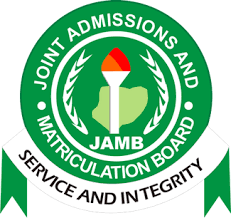The Joint Admission Matriculation Body JAMB have prepared essential topics/syllabus to help students prepare for the JAMB Examination. This article shows the JAMB course outline for Fine Art.
The main principle for Joint Admissions and Matriculation Board, JAMB Outlines is to prepare candidates for the Examination.The topics listed below are the list of JAMB Outlines for Fine Art.

LIST OF JAMB COURSE OUTLINE FOR FINE ART
SECTION A
1. CLASSIFICATION OF ART
Topics
a. Visual Arts: (Fine and Applied Arts)
b. Performing Arts: (Music, Dance and Drama)
c. Literary Arts: (Poetry, Prose, Recitals) etc.
Objectives
Candidates should be able to:
i. differentiate between the three branches of art
2. ELEMENTS AND PRINCIPLES OF DESIGN
Topics:
a. Elements: line, colour, shape, form, texture, tone, value, space etc.
b. Principles: balance, rhythm, proportion, harmony, contrast, repetition, dominance, variety, etc.
Objectives
Candidates should be able to:
i. identify the elements of design;
ii. analyze the principles of design;
3. ART TERMS:
Pigments, motif, greenware, armature, silhouette, chiaroscuro, cireperdue, terracotta etc.
Objectives;
Candidates should be able to:
i. identify art terms;
ii. link the terms to their areas of art;
iii. use the terms in analyzing artworks
SECTION B
1. HISTORICAL DIMENSIONS OF ART:
Topics;
a. Prehistoric, Greek and Roman Art;
b. Medieval Art: architecture, surface decorations and calligraphy;
c. Renaissance Art and Artists: Giotto Di Bondone, Michelangelo Buonarroti, Leonardo da Vinci and Raphael (Raffaello Santi);
d. 19th and 20th Century art movements; Impressionism, Realism, Futurism, Cubism, Bauhaus, Pop art, Abstract Expressionism and Fauvism.
Objectives;
Candidates should be able to:
i. compare their materials, styles and techniques;
ii. classify the periods and styles with emphasis on architecture, surface decoration and calligraphy;
iii. compare the artists, their works and styles;
iv. differentiate between the various art movements.
v. analyze their styles techniques, innovations and influences;
2. TRADITIONAL AFRICAN ART:
Egypt, Ashanti, Dogon, Mossi, Fon, Senufo, Bambara, Mende, Kissi, Bamileke and Bakumba.
Objectives;
Candidates should be able to:
i. categorize works in terms of style, materials and locations;
ii. categorize works in terms of styles, materials and locations;
3. TRADITIONAL NIGERIAN ART:
Topics
Nok, Igbo-Ukwu, Ife, Benin, Esie, Igala, Jukun, Akwashi, and Mbari
Objectives;
Candidates should be able to:
i. analyze the works in terms of functions, characteristics and locations;
4. NIGERIAN CRAFTS:
Topics
Pottery, woodworks, cloth-weaving, carving, leather works, metal works, beadworks, body decoration, mat and cane weaving.
Objectives;
Candidates should be able to:
i. trace the origins, locations and styles
5. DEVELOPMENT IN CONTEMPORARY NIGERIAN ARTS AND ARTISTS:
Topics
a. Art Schools: Zaria, Nsukka, Osogbo group etc.
b. Nigerian artists and art educators; Aina Onabolu, Ben Enwonwu, S. I. Wangboje, Jimoh Akolo, Dele Jegede etc.
c. Museums, galleries and art centres;
d. Art institutions, cultural art centres, national art organizations – Nigerian Society for Education through Arts (NSEA), Society for Nigerian Artists (S.N.A), National Council for Arts and Culture (N.C.A.C), etc.
e. Major Festivals: Argungu Fishing Festival, Eyo, Egungun, Iri-ji (New Yam), Durbar, Igue, Ekpo, Odo, etc.
Objectives;
Candidates should be able to:
i. determine the influence of the art schools and groups;
ii. assess the artists in terms of their works, specializations, techniques and styles;
iii. analyze the functions of museums, galleries, art centres and art institutions;
iv. evaluate their impact on the development of art;
v. assess their roles and functions;
vi. examine the impact of major festivals on art and culture.
SECTION C
1. ARTISTIC SKILLS, TECHNIQUES AND PROCESSES
Topics
a. Two-Dimensional Art: drawing, painting, graphics and textile design.
b. Perspective:
i. Linear, angular, aerial, parallel etc.
ii. Perspective terms: foreground, picture plane, eye-level, vanishing point, foreshortening, optical illusion, depth etc.
c. Sculpture, Ceramics and Crafts,
d. Computer Graphics: CorelDraw
Objectives;
Candidates should be conversant with:
i. the techniques, skills and processes with emphasis on tone, composition and colour application;
ii. the types of perspective;
iii. the use of perspective rules and terms;
iv. techniques, skills and processes;
v. the basic tools of designs
2. TOOLS, MATERIALS AND EQUIPMENT
Topics;
a. Two-Dimensional Art Tools: brushes, lino cutters, drawing instruments, calligraphic pens, sharpeners etc.
b. Two-dimensional Art Materials: pencils charcoal, pastel, crayon, fixative, fabric, dyes, lino, wood blocks etc.
c. Two-Dimensional Art Equipment: air compressor, spray gun, enlarger, computer etc.
d. Improvisation of tools, materials and equipment;
i. Two-Dimensional Art: colours, brushes, calligraphic pens etc.
ii. Three-Dimensional Art: spatula, kiln, beater, etc.
Objectives;
Candidates should be able to:
i. maintain tools and art materials;
ii. use art materials and tools;
iii. operate and maintain art equipment;
ix. improvise alternatives
SECTION D
1. ART APPRECIATION
Topics:
a. Man-made objects: architecture, sculpture etc.
b. Natural phenomena: Zuma Rock, Ikogosi Warm Springs, etc
Objectives;
Candidates should be able to:
i. appreciate the aesthetic qualities of natural and man-made aesthetic phenomena in Nigerian environment;
ii. differentiate between natural and man-made aesthetic phenomena;
2. MEANING AND FUNCTIONS OF ART IN SOCIETY
Topics:
a. What art is.
b. Functions of art in the society: religious, social, cultural, political, therapeutic and economic needs.
c. Functions of art in the media: advertisement, education, recreation etc.
Objectives;
Candidates should be able to:
i. examine the meaning and functions of art;
ii. use art to enhance societal values;
iii. assess the role of art in the media;
3. ART ENTREPRENEURSHIP
Topics
Job prospects in Visual Arts: Ceramist, Curator, Textile designer, Industrial designer, Sculptor, Photographer, Cartoonist, Illustrator etc.
Objectives;
Candidates should be able to:
identify job opportunities in visual arts
Related Posts:
- Joint Admissions and Matriculations Board (JAMB) Course Outline for Literature-in-English
- Joint Admissions and Matriculations Board (JAMB) Course Outline for English Language
- Joint Admissions and Matriculations Board (JAMB) Recommended Textbooks for Chemistry
- Joint Admissions and Matriculations Board (JAMB) Recommended Textbooks for Music
- Joint Admissions and Matriculations Board (JAMB) Recommended Textbooks for Igbo Language
Leave a Reply